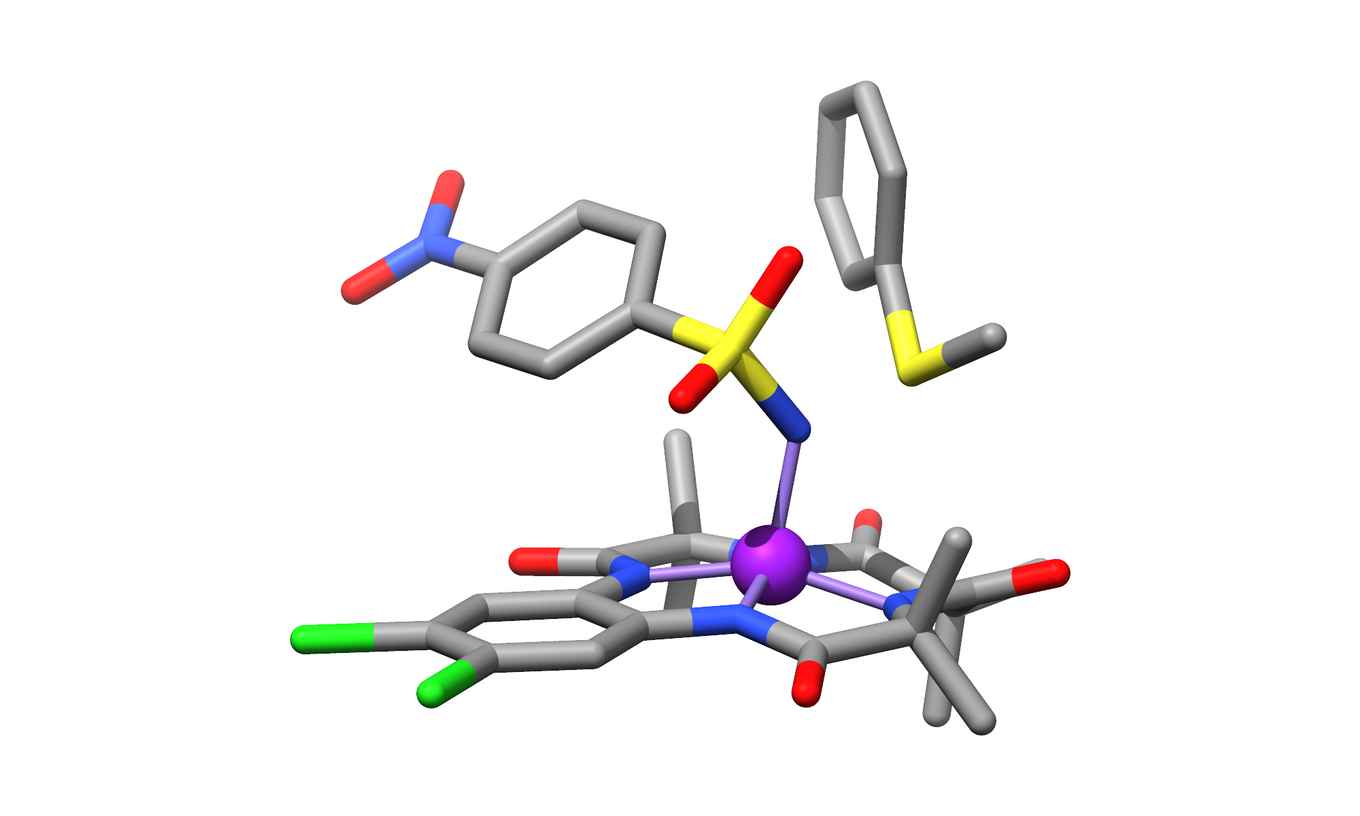Catalytic chemoselective sulfimidation with an electrophilic nitrene radical complex
21 September 2020

Abstract
The cobalt species PPh4[CoIII(TAMLred)] is a competent and stable catalyst for the sulfimidation of (aryl)(alkyl)‐substituted sulfides with iminoiodinanes reaching turnover numbers up to 900 and turnover frequencies of 640 min‐1 under mild and aerobic conditions. The sulfimidation proceeds in a highly chemoselective manner, even in the presence of alkenes or weak C‒H bonds, as supported by inter‐ and intramolecular competition experiments. Functionalization of the sulfide substituent with various electron‐donating and electron‐withdrawing arenes and several alkyl, benzyl and vinyl fragments is tolerated, with up to quantitative product yields. Sulfimidation of phenyl allyl sulfide led to [2,3]‐sigmatropic rearrangement of the initially formed sulfimide species to afford the corresponding N‐allyl‐S‐phenyl‐thiohydroxylamines as attractive products. Mechanistic studies suggest that the actual nitrene transfer to the sulfide proceeds via (previously characterized) electrophilic nitrene‐radical intermediates that afford the sulfimide products via electronically asynchronous transition states, in which SET from the sulfide to the nitrene‐radical complex precedes N‒S bond formation in a single concerted process.
Paper
Nicolaas P. van Leest, Jarl Ivar van der Vlugt, Bas de Bruin: Catalytic Chemoselective Sulfimidation with an Electrophilic [CoIII(TAML)]‒Nitrene Radical Complex. Chem. Eur. J., accepted article, first published 18 August 2020. DOI: 10.1002/chem.202003566
Link
Website research group Bas de Bruin.